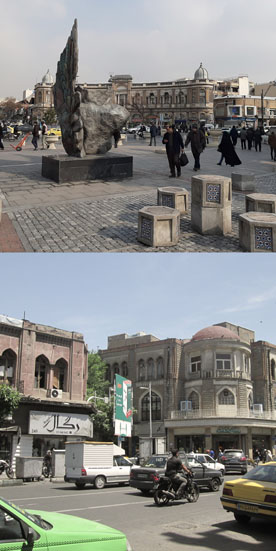Assembling Iran’s Urban Heritage Conservation Policy and Practice: Problematised in Tehran

Having expanded and transformed as an academic and professional field since the late 19th century, urban heritage conservation has become a significant part of urban planning and public policy-making in many countries. However, the field is criticised for its shortfalls in responding to the problems that have arisen in the face of contemporary urban development. Today, the urban heritage conservation research community calls for case studies that problematise and diagnose the mainstream principles of the field in the local urban contexts. Cases from the countries in which the modern understanding of cultural heritage has not developed from within the native culture can play a remarkable role in filling this gap. Iran is one such example. In Iran, the academic, administrative, legal, and civic foundations of cultural heritage conservation were shaped and assembled, based on the European models, in the first three decades of the 20th century. Urban heritage conservation, as an academic and professional field, appeared in Iran in the early 1970s. Due to the rapid formation of the urban heritage conservation assemblage in Iran, the fundamental concepts that shaped the idea of conservation in Europe were not processed and adapted to the Iranian political, cultural, and geographical context in a long-term process. The ultimate objective of this research is to present a diagnostic reflection on the responsiveness of the current urban heritage conservation assemblage in the context of urban development in Tehran. To achieve this, first, the critical transformation stages of the urban heritage conservation assemblage in Iran since 1970 will be explained and mapped and, second, the national urban heritage conservation assemblage will be contextualised and problematised in Tehran’s historic zone. This research adopts a qualitative approach with an embedded single case study strategy. Here, the urban heritage conservation mechanism in Iran is conceptualised as a dynamic assemblage, composed of inter-connected human and non-human elements. An inductive, empirical approach that follows the principals of ethnographic research in observing and explaining the investigated phenomena is adopted. For categorising and analysing the collected data, the qualitative technique of thematic coding will be used. The capital city of Iran is selected as a unique case, which offers a wide range of challenges and contradictions between urban development and urban heritage conservation in a modern Iranian megacity. The results will contribute to addressing the gap in urban heritage conservation scholarship in understanding local mechanisms of urban conservation in non-western, and in particular, Middle-Eastern countries. The urban conservation policy and practice in the Iranian national context have rarely been considered internationally. This research can raise the international profile of urban conservation in Iran, allowing it to be understood and reflected on.
Researcher: Solmaz Yadollahi as the DFG project 431496196
